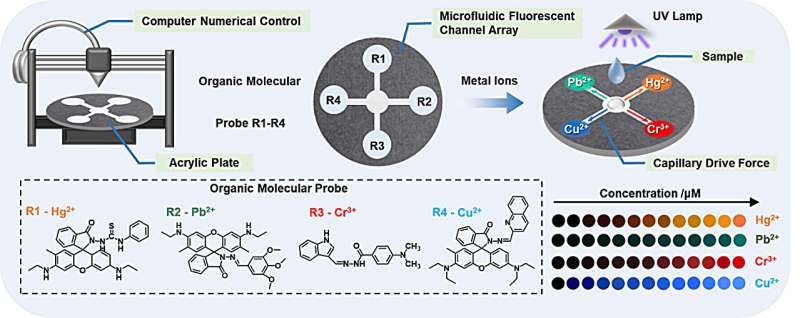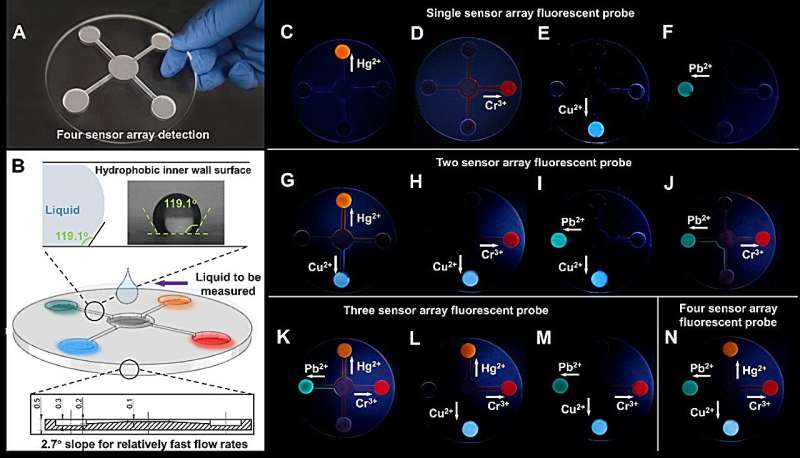This article has been reviewed according to Science X's editorial process and policies. Editors have highlighted the following attributes while ensuring the content's credibility:
fact-checked
peer-reviewed publication
trusted source
proofread
Microfluidic sensors enable real-time detection of multiple heavy metals in water

A group of researchers from the Hefei Institutes of Physical Science of the Chinese Academy of Sciences has designed and developed advanced microfluidic sensor arrays that use fluorescent probes to simultaneously visualize and quantitatively detect multiple heavy metal ions in environmental water in real time.
"This innovation provides a powerful new tool for monitoring water quality and ensuring water safety," said Prof. Jiang Changlong, who led the team.
The study is published in Chemical Engineering Journal.
Heavy metals such as mercury (Hg2+), lead (Pb2+), chromium (Cr3+), and copper (Cu2+) are common pollutants in our water systems. These contaminants are difficult to remove and can cause serious harm to both ecosystems and human health.
Traditional methods for detecting these metals are often slow and require analysis of each metal individually, which is neither efficient nor convenient.
To overcome these limitations, the team designed microfluidic sensors on acrylic plates using a clever combination of capillary force and the hydrophobic nature of the plates' inner surfaces. This setup allows for the creation of intricate microfluidic channels where the magic happens.
The key to these sensors is the use of organic fluorescent probes. These probes are not only inexpensive, but also incredibly sensitive and selective. They can easily bind to specific heavy metal ions, causing them to light up and signal the presence of these contaminants.

The researchers built microfluidic chip arrays containing four different fluorescent probes, each designed to detect one of the target heavy metals. Using these probes, they created a highly sensitive, selective, and visual system that can simultaneously detect and measure the concentrations of Hg2+, Pb2+, Cr3+, and Cu2+ in water.
The detection system works with a microfluidic chip and a smartphone equipped with color recognition technology. This means that not only can these heavy metals be detected in real time, but the results can also be visualized and quantified instantly, making it a user-friendly and highly efficient solution for monitoring water quality.
This approach provides a faster, more accurate way to ensure that our water is safe from harmful heavy metal contamination, according to the researchers.
More information: Lingfei Li et al, Design of microfluidic fluorescent sensor arrays for real-time and synchronously visualized detection of multi-component heavy metal ions, Chemical Engineering Journal (2024). DOI: 10.1016/j.cej.2024.152636
Journal information: Chemical Engineering Journal
Provided by Chinese Academy of Sciences


















